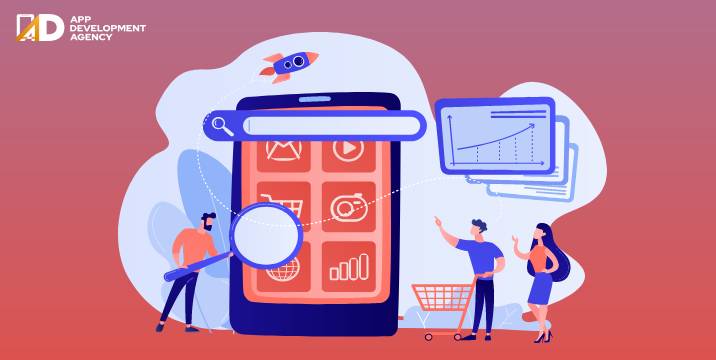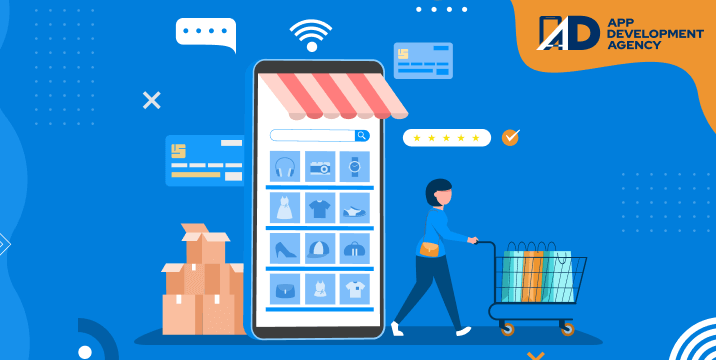eCommerce
How to Go About Creating an E-Commerce Brand?
September 09, 2021
Here are tips for planning your e-commerce brand!
You might often want to throw up a little bit before every project development. Maybe you've been there – the butterflies and knots in the stomach before presenting the best version of your site to your target audience. Maybe, the goal isn't for you to be comfortable with what you present and what your audience is looking for; Maybe the butterflies and knots are the sign that you care to bring out the best from the available resources and match the competition and market conditions. Maybe, the goal you should be striving for is to move forward with your idea and do every bit to make it successful, even though the path ahead looks hurdle-prone. If you make it your goal and strive instead of retrieving, and if you realize that your offerings will help many people, you'll bury the feelings of not being comfortable or queasy.
How you strategize the implementation is way more important than the size of your e-commerce solution. From researching top e-commerce trends to zeroing on an ideal e-commerce website development company, the path ahead is long but worthy!
What is an E-commerce website?
E-commerce business involves digital sales and purchases through secure payment gateway integration/digital payment method.
Building Your E-Commerce Brand
Branding surfaces such emotions. Organizations need not let the compulsive need to be perfect and get the better out of them. A better brand aims for perfection and acknowledges small wins. To be better, eCommerce website development companies focus on doing the best they can.
E-commerce brands seek perfection but are never perfect. But it brings a seasonable option while most people are shopping online, as most retail storefronts and shopping malls are closed due to the Coronavirus pandemic. Offline storefronts that have become operational lately require people to wear masks and sanitize their hands. Shipping is safer as delivery people drop the packet at the doorstep, maintaining a 2 feet distance, without in-person handover.
Online stores do not have such limitations. Shipping is relatively safer, with less potential for conflict. The penetration of e-commerce on the B2B and B2C is presumably the most permanent. Organizations have tried to uplift their technological front to meet this unexpected demand.
E-Commerce Business Models
E-commerce business models have targeted four types of markets:
- Business to consumer (B2C): This kind of sale occurs between a ‘business and a consumer – buying any product from an online retailer.
- Business to business (B2B): This kind of transaction occurs between two companies that sell goods and services. Manufacturers sell ready-to-use products to wholesalers/distributors, and then that distributor sells the products to a retailer.
- Direct to Consumer (D2C): This comes into action when companies sell their products through social media platforms such as Facebook or Instagram.
- Consumer to consumer (C2C): This plays a role when two customers interact – like in eBay, Etsy, Fiverr etc.
- Consumer to business (C2B): This is when individuals directly sell their products or services to a business organization – like in freelance writing or online consultation.
The emergence of Commerce 3.0
Commerce 3.0 drives E-commerce applications, which decouples the front-end from the back end of the infrastructure stack. It provides increased flexibility, both for the developers and the consumers.
If you back your online presence with an offline channel, it leads to omnichannel retail. This practice lifts and strengthens ‘e-commerce’ and allows consumers to enjoy the seamless integration of mobile, online, and offline experiences.
Developers who create APIs and plug-ins to integrate online activity directly with retailers drive Commerce 3.0 and provide them with personalized services, better functionality and increased speed. Also, an invisible infrastructure characterizes commerce 3.0 by that supports the proliferation of e-commerce.
It is headless and separates the front-end from the back-end of the tech stack. It provides the brand with the ability to be ‘Agile’; produce faster web page load times with high conversion rates.
Features of E-Commerce Website
- Clear and remarkable logo
- Advanced search functionality
- Display payment method icons
- Highlight your social presence
- Privacy and trust icons
- Newsletter sign up
- Deals and discounts
- Login and shopping cart
- Quick contact details
- Product zoom options
- Upselling feature to show related products
- Product reviews to increase your product sale
Benefits of E-Commerce
- People are more likely to buy a product once they watch a video or advertisement about it.
- Ecommerce can scale the business quickly.
- It has a global customer reach.
- 24/7 potential income.
- Low financial cost.
- Gain access to customer data.
- It lowers staffing expenses.
- Needs less amount of finance
- Wide range of products selection at a finger click
- No need for providing a physical address
- Target an amount of audience from all over the world.
- Anytime sales (24 hours/7 days a week – 365 days a year)
How to make an e-commerce website?
- Project Kickoff – Understand the variety of products designed/offered by the client.
- Analyze the website designs of various competitors
- Create Blueprint – Create a blueprint and prototype with product categories. Create a visual sketch of the website before final approval.
- Create Website Content – Create relevant content for product description.
- Visual Design – Review and finalize the design of the website with a product attribute.
- Development – Carry out coding and testing at various browsers and devices. Add target search keywords for easy browsing.
- Launch – Test the functionality of the website for some time. Analyze the flaws and make changes.
How can you bring about a seamless omnichannel experience across your e-commerce website?
- Optimize your website to make it responsive and mobile-friendly. Try building a mobile app if you have a flexible budget.
- Personalize the customer experience in every step as much as possible.
- Utilize the tools like SAP Commerce Cloud for a user-oriented and comprehensive e-commerce experience with end-to-end online retail processes.
- Offer diverse purchase options – online purchases, pick up in-store, purchase in-store, selecting home delivery, online purchase, doorstep delivery.
- Online sellers are also spending their bit on artificial intelligence. It acts as your online in-store associate by providing you personalized recommendations to your customers.
- Augmented reality helps eliminate the hurdle of physical inspection of products – how it looks like in real before they buy it. It is a likely choice in case you want conversions and traffic on your online store.
Best Ecommerce Platforms
- Shopify, Bigcommerce, Squarespace, Woocommerce, Volusion, Zyro
Best E-Commerce Websites
- Amazon India, Flipkart, Snapdeal, Alibaba, eBay India, Jabong, Shopclues, Amazon, Quikr
In Conclusion: What to consider while creating an e-commerce website?
Here are some, in no particular order:
- Does your solution align with your business goal?
- Understand your target market – The applicable taxes, Excise duties, Shipping costs and Compliance to international trade practices
- Segment your customer base geographically – (1) What is the impact of the climate, (2) What are the most common languages used, (3) How do cultural factors impact like, (4) What are the shopping habits, (5) How can you encourage engagement?
- A detailed list of features and functionality at hand to carry the project seamlessly
- Execute a competitive analysis – (1) To check your competitors, (2) Determine what technologies are they using, (3) Compare your features and functionalities with what your competitors are offering on their websites;
- Define your project requirements
- Document your feature list
- List the third-party integrations that you want on your website
- Identify which extensions and customizations you require on your website
- Document your SEO transitions like – 301 redirects, Appropriate tagging, URL optimization, Navigational hierarchy, Internal linking, and Keyword analysis
- Define Internal Roles & Responsibilities like – (1) Assigning a point of contact for taking technical decisions, (2) Who will conduct the design review, (3) Who will be responsible for importing data, (4) Who is going to be the final sign-off authority on the project
- Define a Realistic Timeline
- Define a Realistic Budget
- Identify data migration needs (Catalog data migration, Customer accounts, including customer data, usernames, passwords, addresses, email addresses, Order history, Product review and Promotions/ coupons)
- Review relevant businesses that are transitioning to e-commerce solutions
- Analyze the status of search engine optimization (Current keywords, revenue-generating keywords, existing site ranks, link analysis to keep up with the inventory, setup Google Webmaster)
- Review your site’s existing navigation structure and sitemap and the overall information architecture of your website.
- List down the third-party integrations that you require
- Do you require changes in your existing business plan? If yes, to what extent?
- Select an e-commerce platform
- Consider the mobile capabilities of the e-Commerce solution, which you are planning to use for your e-Commerce websites like Web analytics, Digital Marketing, SEO, PPC, and Social Media Integration.
- A suitable E-commerce development partner
- Feedback and continuous improvement
Additional Considerations
- Are you looking to expand the number of products over the next couple of years?
- Have you selected a hosted or open-source e-commerce platform?
- Would you require a customized website with unique branding and advanced functionality?
- Are you working with a web development agency or thinking about hiring an in-house team to develop your e-commerce platform?
- Have you selected a CMS?

